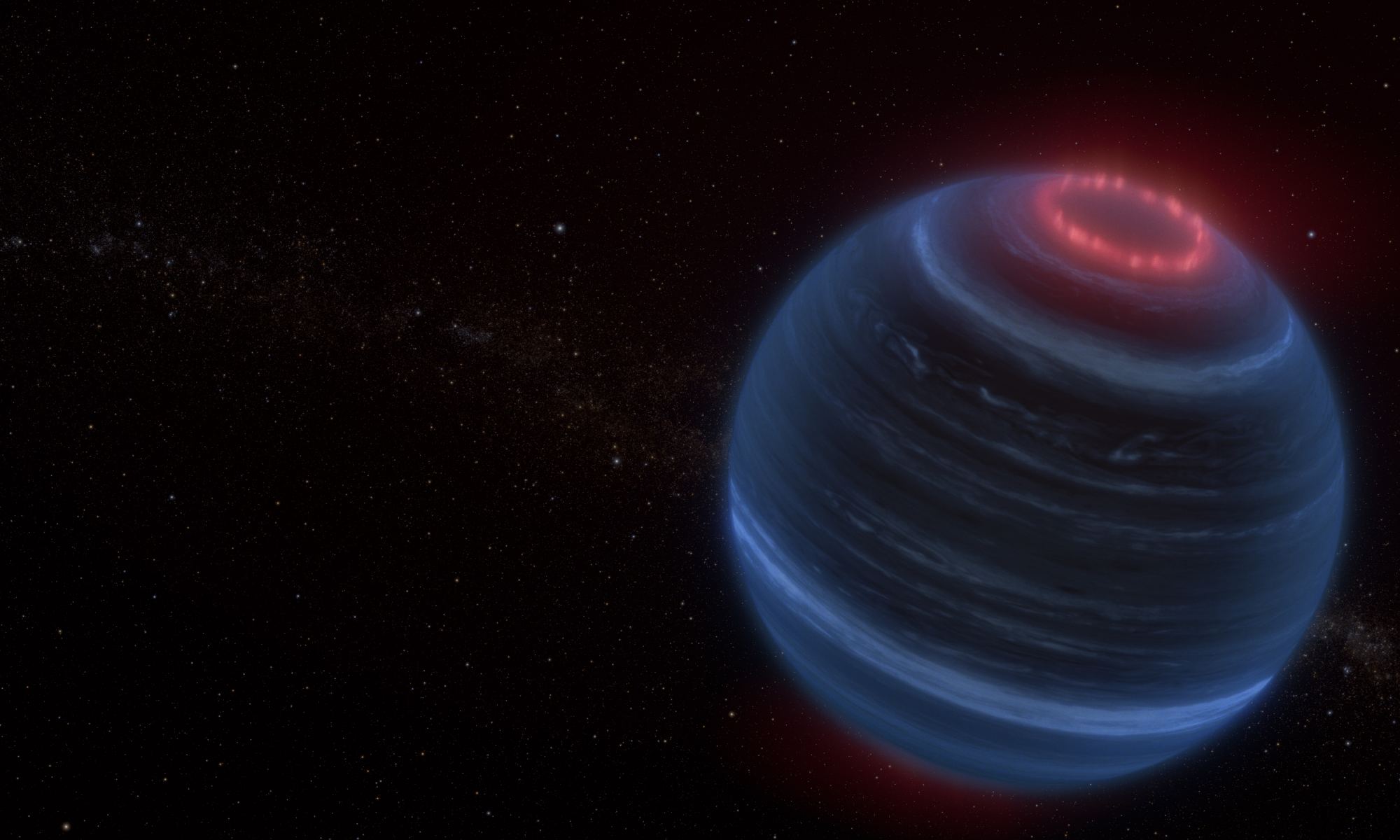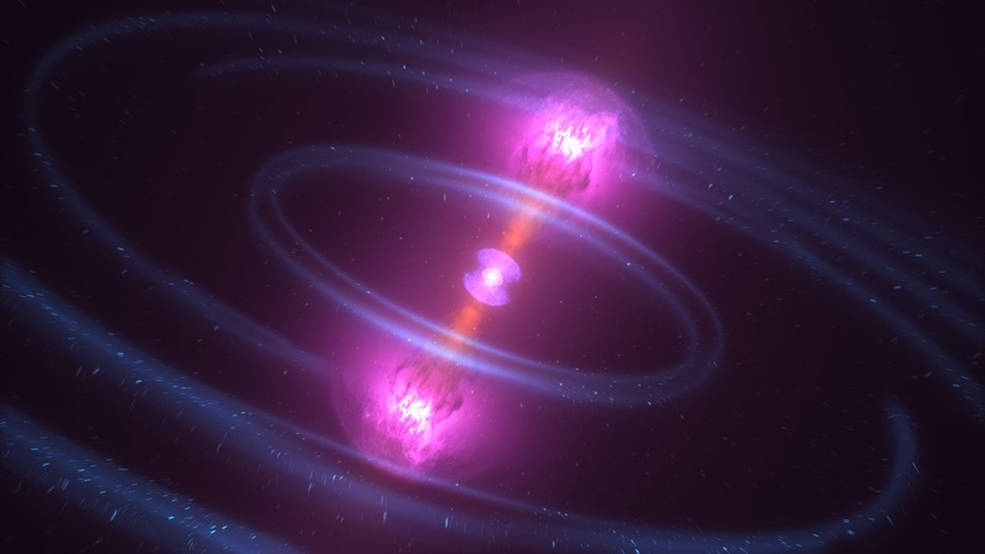Entanglement is perhaps one of the most confusing aspects of quantum mechanics. On its surface, entanglement allows particles to communicate over vast distances instantly, apparently violating the speed of light. But while entangled particles are connected, they don’t necessarily share information between them.
Continue reading “Can Entangled Particles Communicate Faster than Light?”IceCube Just Spent 10 Years Searching for Dark Matter
Neutrinos are tricky little blighters that are hard to observe. The IceCube Neutrino Observatory in Antarctica was built to detect neutrinos from space. It is one of the most sensitive instruments built with the hope it might help uncover evidence for dark matter. Any dark matter trapped inside Earth, would release neutrinos that IceCube could detect. To date, and with 10 years of searching, it seems no excess neutrinos coming from Earth have been found!
Continue reading “IceCube Just Spent 10 Years Searching for Dark Matter”Star Devouring Black Hole Spotted by Astronomers

A team of astronomers have detected a surprisingly fast and bright burst of energy from a galaxy 500 million light years away. The burst of radiation peaked in brightness just after 4 day and then faded quickly. The team identified the burst, which was using the Catalina Real-Time Transient Survey with supporting observations from the Gran Telescopio Canarias, as the result of a small black hole consuming a star. The discovery provides an exciting insight into stellar evolution and a rare cosmic phenomenon.
Continue reading “Star Devouring Black Hole Spotted by Astronomers”What Makes Brown Dwarfs So Weird?
Meet the brown dwarf: bigger than a planet, and smaller than a star. A category of its own, it’s one of the strangest objects in the universe.
Continue reading “What Makes Brown Dwarfs So Weird?”Archaeology On Mars: Preserving Artifacts of Our Expansion Into the Solar System

In 1971, the Soviet Mars 3 lander became the first spacecraft to land on Mars, though it only lasted a couple of minutes before failing. More than 50 years later, it’s still there at Terra Sirenum. The HiRISE camera NASA’s Mars Reconnaissance Orbiter may have imaged some of its hardware, inadvertently taking part in what could be an effort to document our Martian artifacts.
Is it time to start cataloguing and even preserving these artifacts so we can preserve our history?
Some anthropologists think so.
Continue reading “Archaeology On Mars: Preserving Artifacts of Our Expansion Into the Solar System”Building the Black Hole Family Tree

In 2019, astronomers observed an unusual gravitational chirp. Known as GW190521, it was the last scream of gravitational waves as a black hole of 66 solar masses merged with a black hole of 85 solar masses to become a 142 solar mass black hole. The data were consistent with all the other black hole mergers we’ve observed. There was just one problem: an 85 solar mass black hole shouldn’t exist.
Continue reading “Building the Black Hole Family Tree”Need to Accurately Measure Time in Space? Use a COMPASSO
Telling time in space is difficult, but it is absolutely critical for applications ranging from testing relativity to navigating down the road. Atomic clocks, such as those used on the Global Navigation Satellite System network, are accurate, but only up to a point. Moving to even more precise navigation tools would require even more accurate clocks. There are several solutions at various stages of technical development, and one from Germany’s DLR, COMPASSO, plans to prove quantum optical clocks in space as a potential successor.
Continue reading “Need to Accurately Measure Time in Space? Use a COMPASSO”A Binary Star Found Surprisingly Close to the Milky Way's Supermassive Black Hole

Binary stars are common throughout the galaxy. Roughly half the stars in the Milky Way are part of a binary or multiple system, so we would expect to find them almost everywhere. However, one place we wouldn’t expect to find a binary is at the center of the galaxy, close to the supermassive black hole Sagittarius A*. And yet, that is precisely where astronomers have recently found one.
Continue reading “A Binary Star Found Surprisingly Close to the Milky Way's Supermassive Black Hole”New Research Suggests Io Doesn’t Have a Shallow Ocean of Magma

Jupiter’s moon Io is the most volcanically active body in the Solar System, with roughly 400 active volcanoes regularly ejecting magma into space. This activity arises from Io’s eccentric orbit around Jupiter, which produces incredibly powerful tidal interactions in the interior. In addition to powering Io’s volcanism, this tidal energy is believed to support a global subsurface magma ocean. However, the extent and depth of this ocean remains the subject of debate, with some supporting the idea of a shallow magma ocean while others believe Io has a more rigid, mostly solid interior.
In a recent NASA-supported study, an international team of researchers combined data from multiple missions to measure Io’s tidal deformation. According to their findings, Io does not possess a magma ocean and likely has a mostly solid mantle. Their findings further suggest that tidal forces do not necessarily lead to global magma oceans on moons or planetary bodies. This could have implications for the study of exoplanets that experience tidal heating, including Super-Earths and exomoons similar to Io that orbit massive gas giants.
Continue reading “New Research Suggests Io Doesn’t Have a Shallow Ocean of Magma”The Mysterious Case of the Resurrected Star
The star HD 65907 is not what it appears to be. It’s a star that looks young, but on closer inspection is actually much, much older. What’s going on? Research suggests that it is a resurrected star.
Continue reading “The Mysterious Case of the Resurrected Star”




